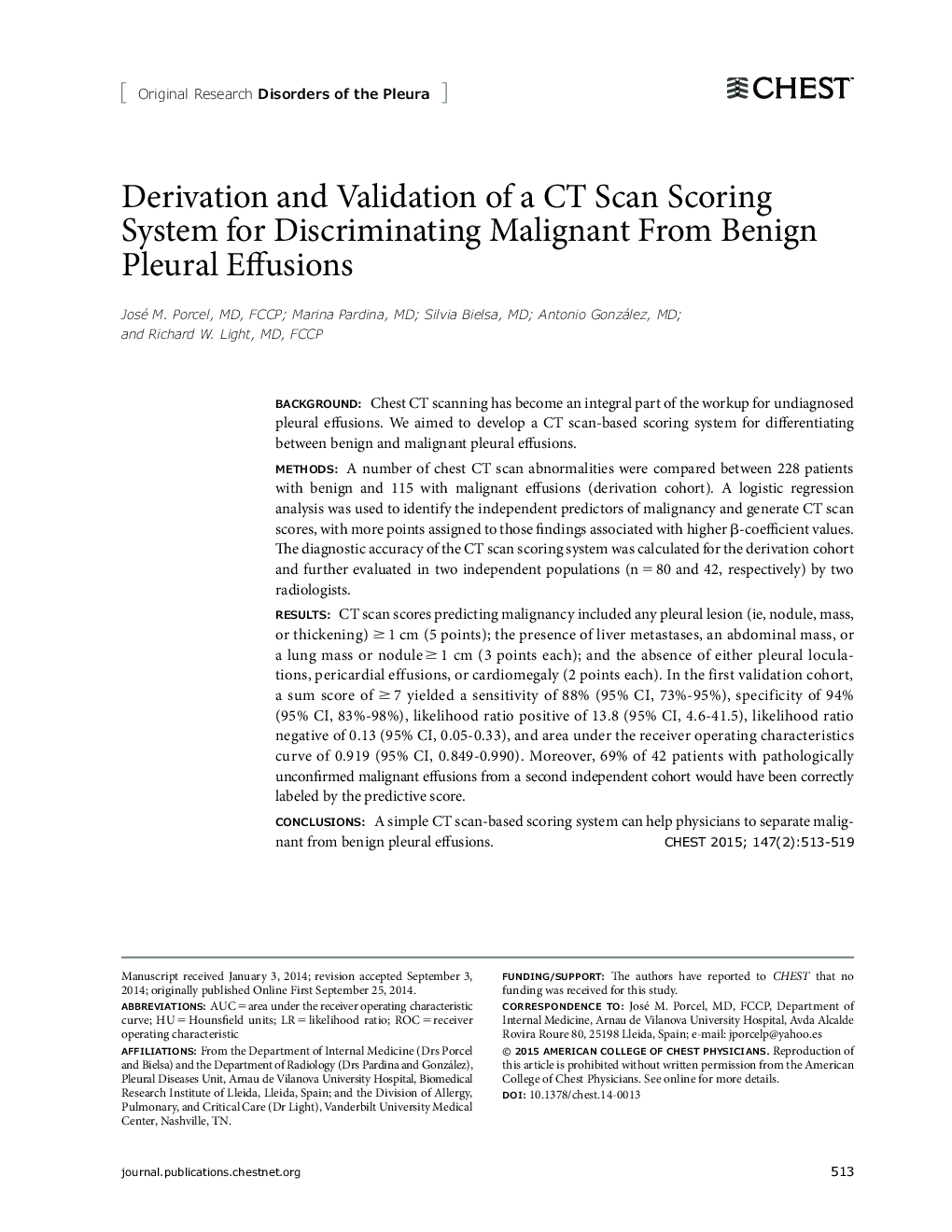| Article ID | Journal | Published Year | Pages | File Type |
|---|---|---|---|---|
| 5954994 | Chest | 2015 | 7 Pages |
BACKGROUNDChest CT scanning has become an integral part of the workup for undiagnosed pleural effusions. We aimed to develop a CT scan-based scoring system for differentiating between benign and malignant pleural effusions.METHODSA number of chest CT scan abnormalities were compared between 228 patients with benign and 115 with malignant effusions (derivation cohort). A logistic regression analysis was used to identify the independent predictors of malignancy and generate CT scan scores, with more points assigned to those findings associated with higher β-coefficient values. The diagnostic accuracy of the CT scan scoring system was calculated for the derivation cohort and further evaluated in two independent populations (n = 80 and 42, respectively) by two radiologists.RESULTSCT scan scores predicting malignancy included any pleural lesion (ie, nodule, mass, or thickening) ⥠1 cm (5 points); the presence of liver metastases, an abdominal mass, or a lung mass or nodule ⥠1 cm (3 points each); and the absence of either pleural loculations, pericardial effusions, or cardiomegaly (2 points each). In the first validation cohort, a sum score of ⥠7 yielded a sensitivity of 88% (95% CI, 73%-95%), specificity of 94% (95% CI, 83%-98%), likelihood ratio positive of 13.8 (95% CI, 4.6-41.5), likelihood ratio negative of 0.13 (95% CI, 0.05-0.33), and area under the receiver operating characteristics curve of 0.919 (95% CI, 0.849-0.990). Moreover, 69% of 42 patients with pathologically unconfirmed malignant effusions from a second independent cohort would have been correctly labeled by the predictive score.CONCLUSIONSA simple CT scan-based scoring system can help physicians to separate malignant from benign pleural effusions.
